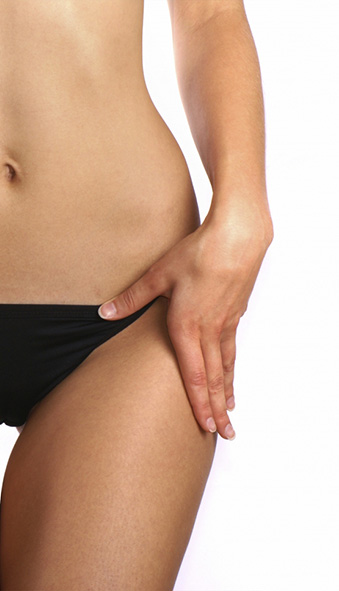Body Contour Surgery

Fat removal: Persistent fat pads can not be fought even with strict diets, exercise and special cellulite treatments. They usually sit where they are particularly disturbing and affect not only the overall aesthetic impression of body proportions, but also the self-esteem of many people. With the liposuction (liposuction), the body image can be corrected very well and permanently. Especially with local fat deposits on the hips, on the belly, on the restraints, on the upper body and under the chin (“double chin”) excellent results can be achieved. Liposuction in most cases is for aesthetic reasons and is generally not a matter of age. Only in lipoedema treatment can medical indications for liposuction also speak. However, if you opt for aesthetic liposuction, your skin should still be firm and elastic. In liposuction, a cannula is inserted into the fat depot through a mini skin incision (about 2-3 mm) at the most inconspicuous place and the excess fat cells are sucked off. The subcutaneous fat cells are grape-like packed in thin connective tissue sheaths. These are aspirated with the cannula and the fat is sucked out of its shell by the negative pressure. The fat puddles can be between one and two inches tall. The art of the surgeon is to feel through the skin with great sensitivity, what to remove from fatty tissue and what should be preserved. The goal of liposuction / liposuction is not to radically remove all fat cells, but to create a new, even contour. Liposuction is not a kind of weight loss procedures.
Bear in mind
Which results can be achieved?
With the removal of troublesome accumulations of fat and the modeling of the corresponding parts by the surgeon, the body becomes slimmer after liposuction and the proportions gain in harmony. However, this method is no alternative to weight loss and no treatment for obesity. Not the whole human can be made leaner by liposuction, but individual batches with localized strong accumulations of fat. It may also be that with too flabby skin only a surgical removal of the excess skin together with the fatty tissue helps.
Anesthesia form and hospital stay
Liposuction is usually performed on an outpatient basis with minor corrections. With local anesthesia and with an infusion of painkillers you will hardly feel the operation. You can also leave the hospital immediately after the procedure. Major surgery requires general anesthesia. When correcting the hip and leg region, spinal anesthesia may also be used. The necessary preliminary examinations will then be carried out on the day before your appointment at the clinic. You also have the opportunity to discuss the anesthetic with the anesthetist. Depending on the procedure, liposuction / liposuction may take one to two days in hospital.
How do I prepare for the operation?
You do not have to specially prepare for the operation. However, you will need to get a pair of corset or support stockings. Be sure to bring them with you to the operation. In addition, for the duration of 14 days prior to liposuction, do not use any analgesics such as aspirin, blood thinner products, supplement, vitamines etc., as these delay the blood clotting. Alcohol and sleeping pills should be avoided.
How is the operation going?
Before the actual procedure, the surgeon decides on the modeling of the affected sections. For this he marks the fat pads in the form of contour lines on the body. The small skin incision of about one half to one centimeter takes place in an inconspicuous place, such as in the gluteal folds or in the navel. The liposuction / liposuction begins immediately with the insertion of the cannula. Depending on the area and extent, it lasts from 20 minutes to two hours. The skin incision is sewn after the procedure. The extracted fat cells are collected and measured during the operation. This allows the operator to check that uniform quantities are removed on both sides. The amount varies depending on the individual constitution and anatomical region sometimes very strong. Even on the operating table, a girdle, support stockings or bandages are pulled over the affected areas. This prevents the resulting cavities from filling with tissue fluid and causing nodules or scars.
What happens after the operation?
Immediately after liposuction / liposuction surgery, you may experience mild pain and bruising. Both can be seen within a few days to a few weeks. Swelling of the affected areas are, as with any surgery, also completely normal for liposuction. However, these are completely reduced within three months. A final result can in most cases only be assessed after six to nine months. The skin incisions leave small scars that fade over time and are barely recognizable.
Which risks have to be considered?
If you are aware of any allergies (eg to medication ) or other illnesses, you must notify us in any case. If you have noticeable bruises or if you have persistent bleeding after minor injuries, a coagulation disturbance before the operation should be excluded by appropriate examination.

What complications can arise?
After liposuction, a change in touch sensitivity with numbness may occur for several weeks. Appropriate predisposition or non-consistent bandaging may result in bruising or scarring. These are recognizable as superficial bumps. If these do not develop, or only very hesitantly, after several weeks, another minor intervention may be necessary. If liposuction / liposuction removes large amounts of adipose tissue, increased loss of tissue fluid or blood may occur, which must be compensated by infusions or stored blood. In very rare cases, emboli of clots have been described which require intensive medical treatment. This possibility is very controversial.
Which after treatment is required?
Be prepared to wear girdles, support stockings or bandages for the first six weeks after liposuction, day and night. This is the only way to avoid unwanted scars from developing in the cavities caused by blood, dissolved fat or tissue fluid, which can significantly affect the result. The sutures at the puncture sites can be pulled one week after surgery. As a rule, a check-up at this time will be useful.
What should be considered after the procedure?
Depending on the predisposition, there may be a short-term incapacity to work, especially in the case of major interventions. Normally, however, you will hardly feel impaired in your mood and mobility. However, depending on the type and extent of liposuction, you should refrain from exercising for the first few weeks after surgery. Also massages and other excessive stresses should be avoided. With cold showers you can stimulate the blood circulation well and support the healing process.
Free Consultation

